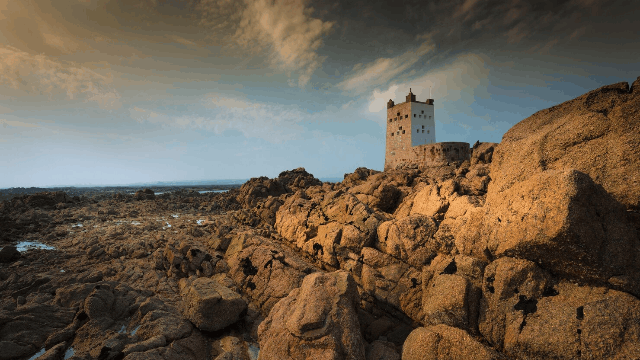Tower of babel - The Terror of God

During the period of the Neo-Babylonian Kingdom, Babylon was the most magnificent and prosperous capital city in the ancient Mesopotamia region. The ancient city of Babylon had two inner and outer walls. Gardens," and the Tower of Babel, which is said to have terrified and angered God. According to the 11th chapter of the "Bible Old Testament Genesis", it was at that time that mankind united to build a tower that hoped to lead to heaven. In order to stop the human plan, God made human beings speak different languages, making it impossible for human beings to communicate with each other. As a result, the plan failed, and human beings have been scattered since then.

Herodotus visits Babylon and the Tower of Babel
The scale of the Tower of Babel is very grand. In 460 BC, 150 years after the tower was built, when the ancient Greek historian Herodotus visited the city of Babylon, he still favored the damaged tower. According to the records of Herodotus, the Tower of Tongtian was built on many layers of huge high platforms. These high platforms have a total of 8 floors, and the higher the height, the smaller. The Marduk Temple is built on the top high platform. There are spiral stairs built on the outer edge of the wall, which can go up around the tower and reach the top of the tower; there are seats in the middle of the tower ladder for rest. The tower base is about 90 meters long on each side, and the tower is about 90 meters high. According to the actual measurement and calculation by the archaeologist Koldevi at the end of the 19th century, the side length of the base of the tower is about 96 meters, and the total height of the tower and the temple is also about 96 meters, which is almost the same. The "Babel" Tower was the tallest building in Babylonia at that time, and it could be seen anywhere in the country. People called it "Babel Tower". Some people also say that it is the stepping place of the gods in the sky on their way to the mortal residence, and it is the post station of the heavenly road.

It is generally believed that the Tower of Babel was a religious building. In the eyes of the Babylonians, the throne of the Babylonian king was granted by Marduk, and the monks were Marduk's servants, and the people needed his protection. In order to please him, in exchange for his grace, and to ensure the perpetuity of the country and city, the Babylonians presented him with the Tower of Babel as a gift. In the Tower of Babel, large-scale ceremonies are regularly held every year, and groups of believers come from all over the country to worship. According to Herodotus' records, there is a Marduk temple on the top and bottom of the tower, which are called the upper temple and the lower temple respectively. There are statues of gods in the lower temple. The upper temple is located at the top of the pagoda. There are no statues inside but it is resplendent, made of dark blue glazed bricks and decorated with gold. The Babylonians served their gods according to the ideals of secular life. There is only one large bed in the hall, which is "very luxuriously laid" (like the Greek and Roman nobles, the Mesopotamian nobles also ate while lying down), and there is a gold-decorated table beside the bed. Only one young and beautiful woman lived in the temple, specially selected to accompany Marduk in his pleasures. The monks made people believe that the Great God came to the temple from time to time and rested on this bed. Only kings and monks can enter the temple, serve Marduk and listen to his teachings; this kind of super sacred thing has nothing to do with ordinary people, they can only worship the gods in their hearts from a distance, because if they are close at hand, Ordinary people can't stand the gaze of a great god. According to Herodotus' records, the statue and its accessories cost 800 Tyrones of gold, equivalent to a current value of about 24 million U.S. dollars. Archaeologists once found a stone duck in a monk's residence, with the inscription "Quasi scale one Tailun", and the stone duck weighed about 29.68 kilograms. If Herodotus' records are reliable, it can be estimated that the statue of Marduk together with its accessories weighs about 23,700 kilograms, all of which are cast or made of pure gold! Besides the gods, who can enjoy such a high courtesy?
Nebuchadnezzar II built the Tower of Babel in exchange for the support of the clergy
Archaeologists and historians believe that the Tower of Babel served two other purposes besides enshrining the Holy Spirit. One is that Nebuchadnezzar II used the image of God to display his personal glory and majesty in order to be immortal. The second is to please the monk group in exchange for their support in order to stabilize the country. Mesopotamia is a place where religion prevails, with many temples and many monks. The monks not only influence the people ideologically, but also hold a lot of land and wealth. If they do not get their political support, the throne may be in jeopardy. This kind of worry is not superfluous. According to research by historians, after Nebuchadnezzar, the New Babylonian Kingdom declined rapidly, so that the Persians occupied Babylon without a single soldier. This has a lot to do with the loss of the support of the monks. relation.

Greek historians in the 1st century BC believed that the Tower of Babel was an astronomical observatory. The Neo-Babylonians believed in star worship, and the stars were gods. In their mythology, Marduk was Jupiter. The monks of the New Babylonian Kingdom climbed to the top of the tower mysteriously. Could it be that they really served the great god Marduk who was half lying on the bed? Herodotus was quite disapproving of this, and modern scholars even less believe it. Maybe they were lying on the bed halfway to observe the celestial phenomena! Moreover, early human astronomical knowledge was directly produced in religion and witchcraft, and most of the people who mastered this knowledge were monks. The Neo-Babylonians achieved the most outstanding astronomical achievements in the world at that time, and the contribution of this tower may not be denied.
Of course, due to the relative height of the Tower of Babel, the Tower of Babel also has the function of a military outpost.

